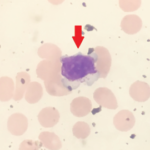In the lead article, “Imaging in Ankylosing Spondylitis” (The Rheumatologist, April 2015), Dr. Pedersen states, “vertebral edges with MRI inflammation were three times as likely to develop new syndesmophytes than vertebral edges without inflammation (odds ratio [OR] 3.3; 95% CI: 1.5–7.4).” This statement is incorrect.
An odds ratio of 3 does not imply that an event is three times more likely to develop. This is best illustrated by defining the term “odds ratio” and going over an example borrowed from Wikepedia.1
An odds ratio (OR) is a measure of association between an exposure and an outcome. The OR represents the odds that an outcome will occur given a particular exposure, compared with the odds of the outcome occurring in the absence of that exposure. The OR, therefore, is a ratio of odds! Let us suppose that in a sample of 100 men, 90 drank wine in the previous week, while in a sample of 100 women, only 20 drank wine in the same period. The odds of a man drinking wine are 90 to 10 or 9:1; the odds of a woman drinking wine are 20 to 80 or 1:4, which is equal to 0.25:1. The OR is, thus, 9/0.25, or 36. In this sample, men are only 90/20 or 4.5 times as likely to have drunk wine as women, but the OR is 36.
The OR is a commonly used statistic that is frequently misinterpreted (even in major journals) as a risk ratio. Unless one understands the definition of OR, a false impression of a large effect can result.
Sincerely,
Rajiv K. Dixit, MD
Northern California Arthritis Center
Walnut Creek, California
References
- Odds ratio. Wikipedia.
Editor Simon Helfgott, MD, replies: Thank you for helping clarify this somewhat confusing topic for our readers.

